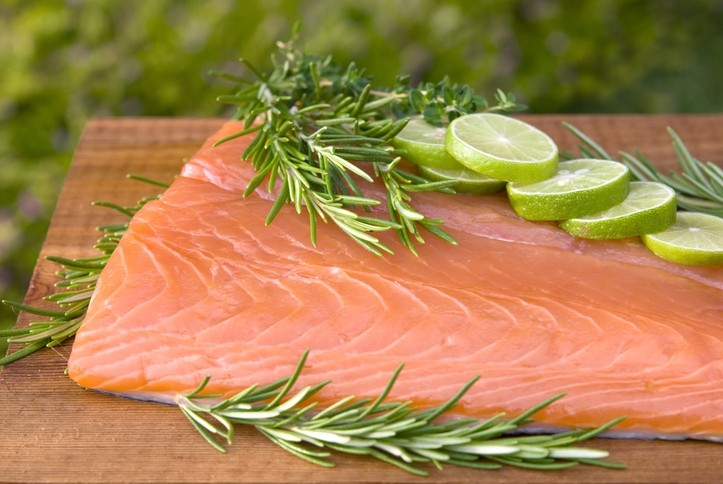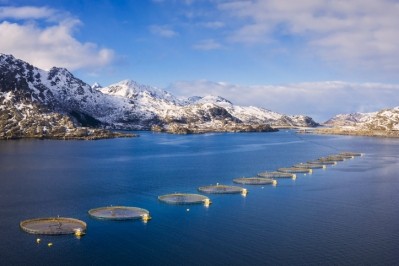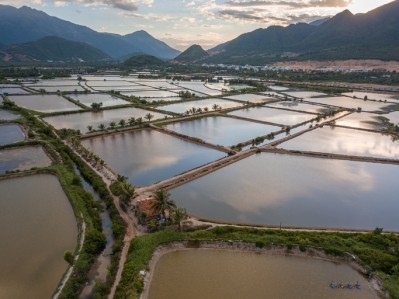Tools to measure fatty acid levels in salmon fillets could help optimize feed formulations

Researchers at the Norway based institute has spent the past few years trying to develop a rapid and non-destructive way of measuring the proportion of EPA and DHA fatty acids in salmon fat.
Raman spectroscopy produced promising results; the technique can be used on whole salmon fillets without physically touching them, and the measurement only takes a few seconds per fillet, according to the Nofima team. Their studies showed that near infrared spectroscopy (NIRS) is not as accurate as Raman, but it is still effective.
Such measurements are useful as they allow the salmon farming industry to document the effect of feed and feed ingredients on the level of eicosapentaenoic acid (EPA) and docosahexaenoic acid (DHA) in fish fillets, an important quality characteristic that can be documented in the market and to consumers, said the scientists.
The past decade has seen increasing focus on the consumer health effects of these omega-3 fatty acids. Fat rich fish such as Atlantic salmon are a major source of EPA and DHA in the human diet and therefore, the abundance of these fatty acids can be considered an important quality parameter in the aquaculture industry.
Most salmon sold in supermarkets today is farmed, and studies have shown that feed is the main factor determining fatty acid composition of the muscle of Atlantic salmon, reported the researchers. “In later years, there has been a trend to replace marine ingredients in feed with vegetable oils, resulting in lower abundance of EPA and DHA. A challenge is that low levels of EPA and DHA have been connected to low fish welfare in sea cages and low fillet quality.”
Indeed, the outcome of another trial that Nofima began in 2019 showed that growth, fish welfare and the quality of salmon muscle are all improved with elevated levels of EPA and DHA in the feed.
Continuous monitoring of EPA and DHA in salmon fillets could provide opportunities for salmon farms to obtain continuous knowledge on impact of different feeding regimes and potentially other farming parameters, they continued. “It could also provide the opportunity to report specific quality features to consumers, resulting in increased consumer trust and more targeted quality differentiation.”
EPA and DHA are also important markers in breeding and genetics, noted the Nofima researchers. Many research projects within the fields of feed, nutrition and fish health require such measurements, they said.
Hence, the need to monitor fatty acid features in salmon more closely.
The findings
Raman spectroscopy
The team saw that Raman spectroscopy can quantify several components in the fat, within a matter of seconds, including EPA and DHA. This is done by a laser illuminating the salmon fillet, which can then be scanned quickly without any physical contact.
“We have tested the method on salmon from a number of different locations and feeding regimes, and it turns out to be very accurate.”
The typical variation range for EPA+DHA in salmon is 4-12% of total fat, they reported. ”As of today, the method is excellent at making rapid measurements in a laboratory or next to the line in a production facility. In the slightly longer term, we envisage that Raman can also be put directly on the production line and measure each salmon fillet, but this might require robotic controlled measurements.”
Relevant Raman measurement systems currently cost NOK 700,000 (US$68,560). “This cost must be assessed in relation to the opportunities it can provide regarding effective quality documentation and possible quality differentiation.”
Raman has mostly been used in laboratories or next to the production line. The scientists said they are continuing to develop the technology so that it can be used for continuous measurements of food directly on the production lines. “The results so far are very promising, and we believe that the methodology will help the food industry ensure consistent quality and less waste in their processes.”
The team said they are also collaborating with geneticists to find out whether the methodology can be used directly in breeding work to select fish with the desired fat composition.
NIR imaging spectroscopy
NIR imaging (hyperspectral) spectroscopy is already being used by the food industry to make in-line measurements. The method is used for measuring parameters such as fat in salmon fillets, fat in meat, protein in chicken fillets, as well as residual blood in whole white fish and salmon fillets, outlined the Norwegian scientists.
“We know that NIR imaging is particularly good at measuring total fat content, but there has been more uncertainty as to whether it can also be used for specific fatty acids such as EPA and DHA.
“The studies show that the method is not as accurate as Raman, but good estimates are also obtained using this technique. One advantage of using NIR imaging is that the technology is faster than Raman, and very suitable for taking measurements directly at production lines.”








